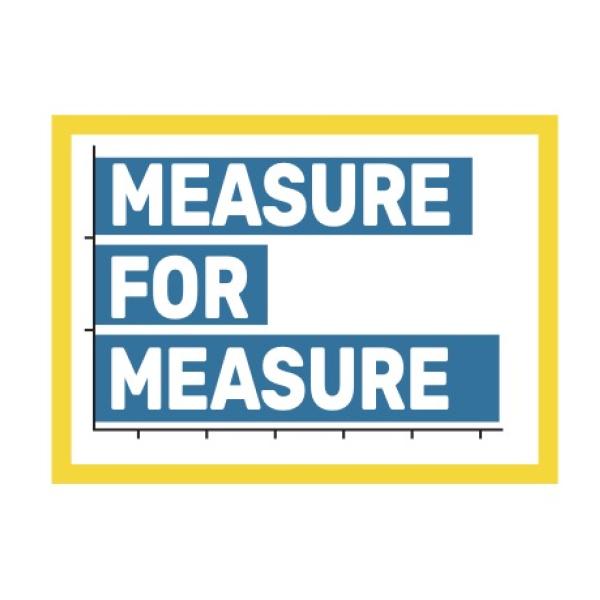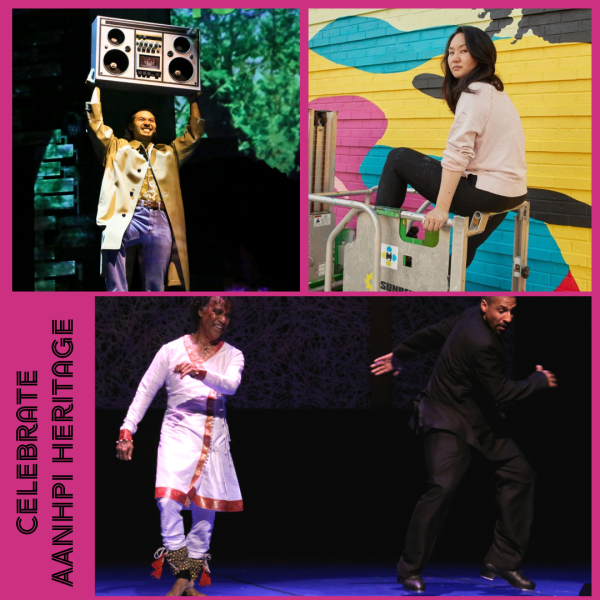12 Things You (Maybe) Didn't Know About the NEA

If you’re reading this blog, you know that the National Endowment for the Arts awards grants. And you probably know that we generate arts research too. And that we publish a magazine. But there are things you may not know about your federal arts agency that we would like to share. And so, without further ado….
1. Willkommen, bienvenue, welcome. The National Endowment for the Arts has recognized 66 different languages through the Literary Translation Fellowship program. That translates to (pun intended) 410 fellowships to 363 translators, with translations from 77 countries. Have you heard of Roberto Bolaño’s 2666, translated by Natasha Wimmer? Yeah, we supported that.
2. “May I have the envelope please? And the winner is . . . the National Endowment for the Arts!” The NEA is a proud recipient of an Academy Award (1985) and a Tony Award (1995). Not only that, but during the 1985 Emmy Awards presentation, we received a special shout-out for our 20th anniversary. Maybe in our next 50 years we can finally EGOT.
3. You might think that the folk and traditional arts are all about bluegrass and basketweaving. Not so. Since the NEA National Heritage Fellowship program started in 1982, we have recognized more than 200 distinct artistic traditions including Cajun fiddling, Western saddlemaking, ornamental ironworking, Irish step-dancing, Klezmer clarinet playing, diving bell helmet forging, shape-note singing, and Basque accordion playing, just to name a few. (Learn more about the Heritage Fellowships—including how many distinct types of blues music we’ve honored—in this recent Art Works post.)
4. You’re allowed to name drop when you’re turning 50, right? In that case, did we mention that Robert Redford’s a fan? Here’s what he had to say about our support for the Sundance Institute, and we quote, “Our very beginning was due in large part to the support of the NEA. It’s hard to imagine the arts in the country without the NEA as a rallying point, a promoter of independent thinking artists, and a symbol of what we hope to be.” Thanks, Bob!
5. If you’re a fan of public television, you may have seen us included among the sponsors. The NEA has awarded numerous grants to WNET/Thirteen in New York City, the creator of programs like American Masters, Great Performances, and Dance in America that are viewed by millions of people around the country and now—thanks to the Internet--around the world. In fact, since 1969, the NEA has awarded more than $54 million to WNET/Thirteen to support those and other programs.
6. Did you see Top Dog/Underdog by Suzan-Lori Parks on Broadway? How about August: Osage County by Tracy Letts, or Spring Awakening by Steven Sater and Duncan Sheik? Those are just some of the plays and musicals created at nonprofit theaters with NEA support that later transferred to Broadway where they went on to win awards and peoples’ hearts. Top Dog/Underdog was developed at the Public Theater in New York; August: Osage County started at Steppenwolf Theatre in Chicago; and Spring Awakening sprang from TheatreWorks in Palo Alto, California. Check out the new issue of NEA Arts magazine to learn more about La Jolla Playhouse, another NEA-supported theater that has the knack for producing work that ends up Broadway-bound.
7. In 1965, there were just 22 states with a state arts agency. Two years later, all 50 states and four jurisdictions had their own arts agencies thanks in large part to the efforts of then-NEA Chairman Roger Stevens and State Director Charles Mark. Chairman Stevens logged more than 300,000 miles talking to leaders around the country to convince them of the value of the arts and the importance of a state/jurisdictional investment in them. That’s the equivalent of circling the earth (at the equator) more than 12 times! Mind blown.
8. The check was definitely not in the mail. Instead we entrusted the very important job of signing and presenting our very first grant to Vice President Hubert Humphrey. The historic recipient? The American Ballet Theater, which is celebrating its 75th anniversary this year. Check out our Art Works podcast with ABT Artistic Director Kevin McKenzie for more.
9. Since it began in 1986, the NEA’s Mayors’ Institute on City Design has taught more than 1,000 mayor “graduates” to be the chief designers of their cities. They arrive at each institute with challenges, problems, and questions about issues in their cities and they leave with information and inspiration, resulting in innumerable enhancements to cities from coast to coast. MICD wouldn’t have been possible without the vision of Charleston Mayor Joseph P. Riley who was a creative placemaking pioneer long before the term was coined. We chat with him about Charleston as an arts city in the new issue of NEA Arts magazine.
10. You know how everyone wants to be the one to discover the next new talent? Well, we don’t mean to brag, but we’ve been doing it for years. For example, playwright Wendy Wasserstein, creator most famously of The Heidi Chronicles, received a theater fellowship in 1982 that allowed her to finish her play Isn’t It Romantic? She would go on to receive a Pulitzer Prize, Tony Award, a New York Drama Critics Circle Award, a Drama Desk Award, and an Outer Critics Circle Award among many of her awards over her career. The NEA recognized her talents early on and gave her a boost toward greatness.
11. Picture those famous and fragile terra cotta warriors from China or the treasures from King Tut’s tomb. Now picture the whopping price tag for insuring those priceless works of art. Given the tremendous value of these objects, their owners require insurance prior to shipping. That’s where we step in. The Arts and Artifacts Indemnity Program, administered by the NEA on behalf of the Federal Council on the Arts and the Humanities, has indemnified hundreds of exhibitions, saving organizers $400 million in insurance premiums. Look for “This exhibition is supported by an indemnity from the Federal Council on the Arts and the Humanities.” next time you’re at the museum.
12. The day of the September 11 terrorist attacks in 2001, there was a Literature panel in process at the NEA, one of the thousands of expert panels convened over the years to review grant applications. After being evacuated from the Old Post Office building (which by the way is the tallest building between the White House and the U.S. Capitol building and halfway between the two), the panelists chose to continue the panel—and their public service—at a local hotel. In other words, in the face of the great confusion and sorrow of the day, they put their faith in the power of the arts.
We may not turn 50 officially until tomorrow, but we couldn’t resist starting the celebration a day early. Join the celebration by visiting the brand new 50th anniversary section on our website and by joining our anniversary social media virtual flashmob on Thunderclap.




